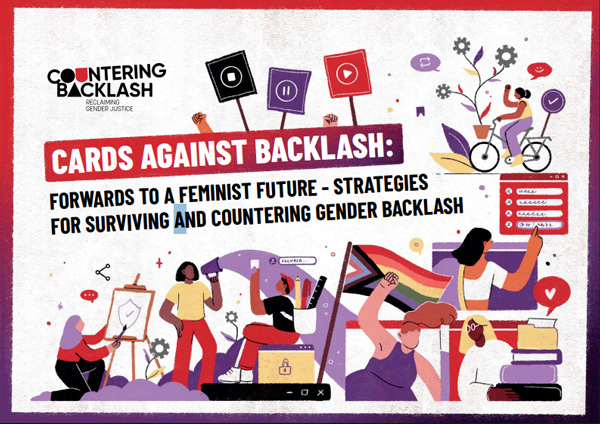The power of many voices: Collaborative knowledge communication for better policy and practice
This year’s World Evidence-Based Healthcare (EBHC) Day theme, Collaborative Knowledge Communication, provides an opportunity to interrogate one of the most important aspects of the evidence to action cycle: the people most affected by it. Over time, there have been realisations and recognition that the evidence-to-action continuum is not linear—where researchers generate evidence, decision-makers translate it into policy and practitioners implement it. In reality, the process is more complex, dynamic, iterative—and far more powerful when multiple voices are part of the conversation.
Why multiple perspectives matter
Evidence comes in many forms: clinical trials, implementation studies, community stories, visual graphics, practitioner insights and real-world experiences. Each offers a different lens on what works, what doesn’t and why. When only one type of knowledge is privileged, blind spots emerge. By weaving together diverse perspectives, we not only enrich our understanding but also build solutions that are more relevant, equitable and sustainable. The challenge lies in balancing those perspectives, especially if they suggest contradictory outcomes or solutions. Nevertheless, without social participation, we are sure to design technical solutions for human problems—and by default perpetuate epistemic injustices.
Communication as collaboration
Communication is not just about transmission; it is about connection. When policymakers hear directly from affected communities, when researchers listen to frontline practitioners and when civil society helps frame the questions being asked, knowledge becomes shared rather than siloed. Collaborative communication creates trust, which is the cornerstone of effective policy and practice.
Stories from IDS practice
The Institute of Development Studies in the UK is committed to upholding epistemic justice, focusing research on social participation (see the Participatory Methods website) and ensuring that power and voice are integral to all our approaches. Our research is coupled with strategic collaborative knowledge communication. Some of the examples below show more immediate, powerful and impactful change than would not be possible without genuine and authentic community engagement.
- Countering Backlash: The Countering Backlash programme aims to build knowledge, methods and capacity with feminist movements, women’s rights organisations, activists and policymakers to respond to backlash against gender justice. The program emphasises co-creation and communicative strategies alongside research—working across networks and strategic partnerships to confront changing strategies of patriarchal and conservative resistance. One of the published “case studies” from the programme is ‘Rediscovering empathy: Building solidarity in difficult times in Uttar Pradesh, India’, where local feminist organisations reflected on how narratives, masculinities and community trust were being reshaped under social and political pressure. In workshops with activists and policymakers, women’s rights defenders from South Asia and Africa shared first-hand experiences of navigating growing resistance to gender equality. This publication on Building Solidarities: Gender Justice in a time of Backlash includes many stories of activists encountering pushback, harassment, threats, and how these experiences affect their ability to influence policy. These stories can sometimes communicate urgency more vividly than any statistic could. By creating space for these voices to be heard alongside academic evidence, the project has not only sharpened research insights but also helped shape strategies that are grounded in realities.
- CLARISSA (Child Labour: Action-Research-Innovation in South and South-East Asia): The CLARISSA programme led by IDS in consortium with partners, worked with communities in Bangladesh and Nepal to co-develop evidence and innovation to tackle the drivers of the worst forms of child labour. In Bangladesh, children involved in the worst forms of child labour were trained as co-researchers, documenting their own experiences through photos, drawings and storytelling which can be found on the Hard Labour platform. The stories and engagement of children in the solution space was critical. Their perspectives—often missing from formal reports—became central in framing recommendations that were later shared with policymakers.
- CEDCA (Clean Energy for Development: A Call to Action): CEDCA is an initiative in which IDS plays a cohort support and knowledge translation role. CEDCA brings together 12 research teams and policy actors to accelerate equitable clean energy transitions. Rather than working through traditional reports alone, CEDCA emphasises collaborative learning, storytelling, and knowledge exchange between researchers, communities, and decision-makers. Through webinars, impact pathway workshops, and stakeholder dialogues, it helps ensure that evidence on energy access and transitions speaks to real policy priorities and local experiences. At a CEDCA global learning workshop in Nairobi, researchers from Kenya said that having a space to share their work, compare with others, and get feedback on methods didn’t just improve their research—it changed how they thought about engaging policymakers.
- Better Assistance in Crises (BASIC) Research: IDS’ disability and inclusion projects have shown how accessible communication transforms participation. In the BASIC project, researchers worked with persons with disabilities to co-design easy-to-read materials and use sign language interpretation during policy dialogues. In Uganda, participatory research with persons with disabilities reported that people felt more included than in conventional forums. These adaptations ensured that the evidence generated reflected the priorities of people with disabilities and opened pathways for more inclusive policies.
These examples illustrate that when evidence is co-created and communicated with, not just to, communities, it becomes a shared resource. It gains legitimacy, resonance and power to influence change. It also demonstrates the importance of human-centred design, ensuring that people are at the centre of our research and our recommendations.

Challenges, lessons and next steps
Embedding collaborative communication practices into research is not always easy. It requires several considerations.
- Stakeholder engagement: Iterative stakeholder analysis and engagement that ensures that communication is tailored, responsive and timeous to the needs and preferences of those affected by the research, programs and practices being advocated.
- Multidisciplinary teams: We often talk about multidisciplinary research teams but here, we focus on multi-skilled teams. Including communications and impact professionals ensures that the right strategies are being considered, the right skills are being leveraged and the best outcomes are being promoted.
- Adequate resourcing: Costing for the variety of skills in the team is one piece of the pie; the other is the technology required to deliver on the plan. Often, graphic software (e.g. for infographics or video editing) or technological hardware (for videos or podcasts) are critical to the mission. Costs for these can be high, but highly rewarding and need to be included in research budgets.
- Adaptive planning and delivery: Community needs and preferences can change, and so should your communication strategy. For true collaboration, you need to be adaptive and flexible to be responsive. Funders, supporters and champions need to build this into research and programmes to encourage the best outcomes. Rigidity often lends itself to increased and unnecessary bureaucracy in addition to suboptimal outcomes.
- Trust: While I mention this last, it’s the cornerstone of collaborative communication. Not sure more needs to be said – its rather self-explanatory!
As we mark World EBHC Day 2025, let us commit to moving beyond unidirectional models of knowledge transfer. By embracing collaborative knowledge communication from the start of a project and listening to those we want to reach, we create the possibility for policies and practices that are not only evidence-informed but also context-sensitive and deeply grounded in lived realities.
After all, evidence gains power when it speaks in many voices.
To link to this article - DOI: https://doi.org/10.70253/ILDB6246
Conflict of interest
Nasreen is a member of the World EBHC Day Steering Committee.
Disclaimer
The views expressed in this World EBHC Day Blog, as well as any errors or omissions, are the sole responsibility of the author and do not represent the views of the World EBHC Day Steering Committee, Official Partners or Sponsors; nor does it imply endorsement by the aforementioned parties.
